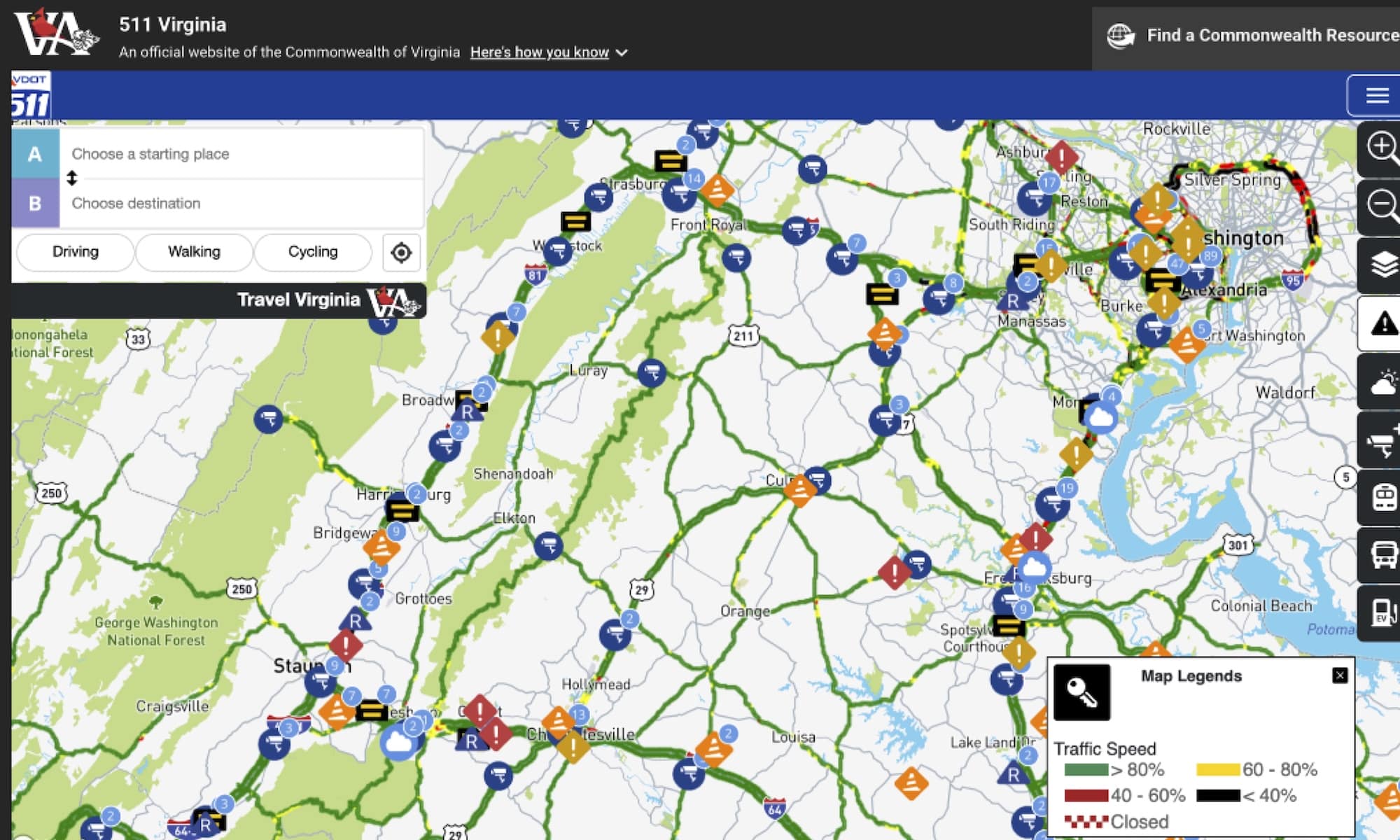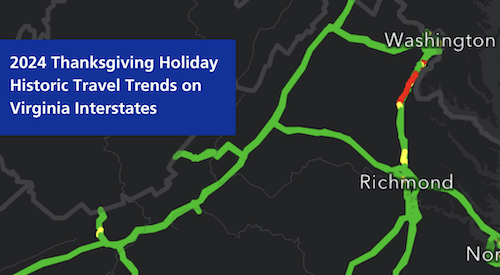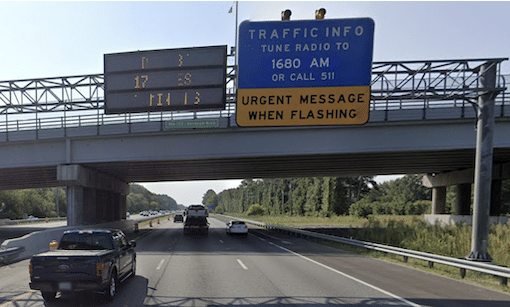
Every day, millions of Virginians rely on the state’s roads and highways to get to work, school, and everywhere in between. Behind the scenes, the Virginia Department of Transportation (VDOT) works tirelessly to keep traffic moving safely and efficiently. A major part of that success comes from the powerful insights provided by INRIX.
From real-time congestion monitoring to long-term planning and performance measurement, INRIX data has become an essential part of VDOT’s strategy to modernize transportation management across the Commonwealth.
Supporting the Traveling Public
VDOT uses INRIX data to provide valuable information to drivers in real time. Through platforms like Virginia 511, travelers can access live traffic updates, incident reports, and travel times across key corridors.

INRIX data also powers holiday travel trend reports and the Travel Trend Tool, helping drivers plan their routes during high-traffic seasons.

In addition, travel time message signs placed along highways provide up-to-the-minute data so drivers can make informed decisions about alternate routes, reducing congestion and improving safety.

Leadership, Planning, and Traffic Operations
VDOT’s leadership team leverages INRIX data for strategic decision-making. The data helps them monitor travel trends, track performance measures, and conduct performance monitoring on a statewide scale.
For long-term planning, INRIX data plays a critical role in supporting the Virginia Transportation Plan (VTrans) and TSMO strategy screening, ensuring that transportation investments deliver the maximum benefit.
At a more operational level, VDOT uses real-time INRIX data in its Traffic Operations Centers (TOCs) to monitor congestion and queues as they happen. This enables rapid incident response and minimizes the impact of disruptions on the roadway network.
Partnering with Localities for Better Transportation
VDOT also shares INRIX data with local agencies to support smaller-scale projects and local corridor analysis. Local governments use this information for planning, policy decisions, special event management, and even for short-term construction planning.
This partnership extends VDOT’s reach, ensuring consistent and data-driven transportation management throughout the state, from major interstates to local arterial roads.
Comprehensive Use of INRIX Data
VDOT utilizes INRIX data in both historical and real-time formats:
- Historical Data: Used for trend analysis, before-and-after studies, return on investment analyses, and federal performance reporting. Corridor studies and SMART Scale project prioritization also heavily rely on INRIX’s deep data history.
- Real-Time Data: Powers congestion maps in Traffic Operations Centers, dynamic message signs (DMS), and the Virginia 511 system to give drivers timely travel information.
One standout use case is VDOT’s corridor management program. INRIX data helps define and monitor 192 corridors across 9 districts, covering 1,811 total signals statewide. This gives engineers and planners a comprehensive view of where delays and bottlenecks occur.
Conclusion
What started as a way to give travelers better information has grown into a comprehensive transportation intelligence program that serves the traveling public, VDOT leadership, operations centers, planners, and local governments. As VDOT continues to expand and refine its use of INRIX data, the Commonwealth of Virginia stands at the forefront of data-driven transportation management.




